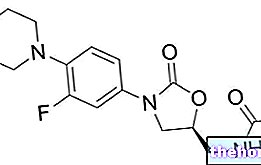Generalities and Classification
Anticholinergic drugs are active ingredients that exert an antagonist-type activity against acetylcholine receptors.

In this regard, anticholinergic drugs can be substantially divided into two macro-groups, such as:
- Muscarinic antagonists (since they act at the level of receptors for muscarinic type acetylcholine);
- Nicotinic antagonists (as they interact with nicotinic acetylcholine receptors).
Muscarinic antagonists
As mentioned, muscarinic antagonists - or antimuscarinics, if you prefer - are anticholinergic drugs that perform their activity by interacting with muscarinic-type acetylcholine receptors.
Basically, there are five different types of muscarinic receptors:
- M1, mainly present in the glands, brain and sympathetic ganglia;
- M2, located especially in the smooth muscles, heart and brain;
- M3, mostly present in smooth muscle (such as gastrointestinal), brain and glands;
- M4; present in the brain;
- M5; mainly located in the eyes and brain.
The progenitor of this type of anticholinergic drugs is atropine, a molecule capable of non-selective antagonizing all five types of muscarinic receptors present in our body.
However, on the market there are antimuscarinic drugs formulated in such a way as to exert their action selectively, only against certain receptor types.
Active ingredients such as scopolamine, ipratropium, tiotropium, solifenacin, darifenacin, oxybutynin and trihexyphenidyl belong to the class of antimuscarinic drugs.
Applications and therapeutic uses
Depending on the type of muscarinic receptor with which anticholinergic drugs interact, different biological responses can be obtained.
Generally speaking, responses to muscarinic antagonists can be said to include:
- Decreased contractility of the smooth muscle of the gastrointestinal tract and urinary tract (in particular, this action is performed by the M3-type receptor antagonists);
- Bronchodilation (due to the "antagonization of M3 receptors present in the bronchus);
- Reduction of gastric secretion and glandular secretions, including salivary and mucociliary secretions;
- Dilation of the pupils (mydriasis).
Antimuscarinic agents, therefore, can be used in the treatment of various diseases and disorders, such as:
- Gastrointestinal spasms;
- Overactive bladder
- Nausea and vomiting (mainly caused by motion sickness);
- Tremors, muscle stiffness and drooling, which characterize Parkinson's disease and parkinsonism;
- Symptoms associated with conditions such as asthma or chronic bronchitis (bronchoconstriction).
The mydriatic action of antimuscarinics, on the other hand, is exploited in ophthalmology during the performance of ophthalmic examinations and medical examinations.
Side effects
Of course, the type of side effects and the intensity with which they occur can vary considerably from individual to individual, also depending on the type of active ingredient used, the route through which the drug is administered and the sensitivity that each patient presents in the comparisons of the same drug.
In any case, the main side effects ascribed to the use - especially if prolonged - of muscarinic antagonists are:
- Dry mouth
- Mydriasis (adverse effect which, as mentioned, is sometimes exploited in ophthalmology);
- Difficulty in urination (an undesirable effect which, as we have seen, in some cases is useful for counteracting the symptoms of an overactive bladder);
- Blurred vision
- Photophobia;
- Constipation;
- Drowsiness;
- Confusion;
- Tachycardia (quite rare side effect).
Nicotine antagonists
Nicotinic antagonists are anticholinergic drugs that act at the level of nicotinic acetylcholine receptors.
The active ingredients belonging to this class of anticholinergic drugs are mainly used as muscle relaxants. Therefore, these drugs are mostly used to favor surgical interventions or during the execution of some types of endoscopic examinations.
Classification and mechanism of action
The anticholinergic drugs that antagonize the nicotinic receptors of acetylcholine exert a neuromuscular blocking activity; for this reason they are often defined as muscle relaxants with peripheral action.
The anticholinergics in question, in fact, bind to the nicotinic receptors present in the neuromuscular plate, thus causing a decrease in the acetylcholine signal and, consequently, a relaxation of the muscles.
More precisely, these drugs can be divided into:
- Depolarizing muscle relaxants with peripheral action, group to which succinylcholine belongs;
- Muscle relaxants with non-depolarizing peripheral action, a group to which active principles such as atracurium, rocuronium and vecuronium belong.
Side effects
Also in this case, the type of undesirable effects and the intensity with which they occur may vary from one patient to another, both as a function of the type of active ingredient chosen and as a function of the sensitivity of each individual towards the drug used.
However, many of these anticholinergic drugs can cause side effects, such as:
- Bronchospasm;
- Asthma;
- Hypotension;
- Cardiovascular disorders;
- Erythema;
- Itching;
- Urticaria.
In any case, for more detailed information about the uses, the mechanism of action and the adverse effects of this type of anticholinergic drugs, please refer to the dedicated article already present on this site: Muscle relaxants.




























